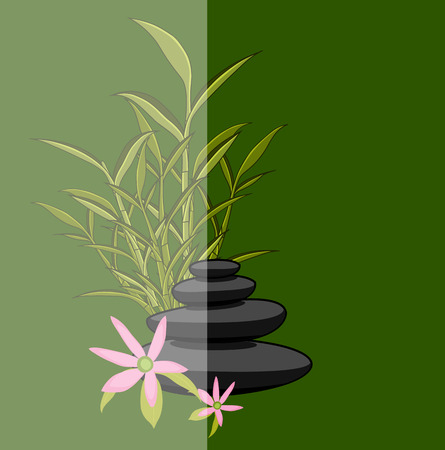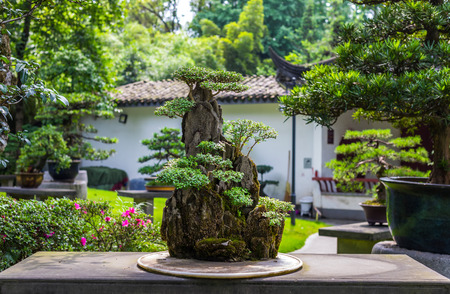Understanding Feng Shui Principles
Feng Shui, an ancient Chinese art and science, centres on the deliberate arrangement of spaces to optimise the flow of energy—known as Qi (pronounced “chee”). At its core, Feng Shui seeks to create harmony between individuals and their environment, promoting wellbeing through balance and mindful spatial planning. In the context of garden design, this involves careful consideration of positioning elements such as paths, water features, and plants to encourage a smooth circulation of Qi. The philosophy draws upon the interplay of Yin and Yang—opposing but complementary forces—and the Five Elements (Wood, Fire, Earth, Metal, Water), each symbolising aspects of nature with specific characteristics and associations. These concepts guide the placement and selection of garden features, aiming for equilibrium rather than excess or deficiency. For those looking to integrate Feng Shui with classic English garden styles, understanding these foundational ideas is essential. It provides a framework for blending traditional British landscaping aesthetics—characterised by structured borders, meandering walks, and focal points—with principles that enhance vitality and serenity in outdoor spaces.
2. The Essence of Classic English Gardens
The classic English garden is a testament to centuries of horticultural evolution, blending artistry and nature in a uniquely British manner. Understanding these gardens’ key features and historical context is essential when integrating Feng Shui principles, as it allows for harmonious positioning and meaningful design choices.
Historical Context of English Garden Styles
Emerging in the 18th century, traditional English gardens evolved from the rigid formality of French styles into spaces that emphasised natural beauty and gentle symmetry. This approach reflected broader cultural movements such as Romanticism, which celebrated nature’s organic forms and pastoral tranquility. Over time, English gardens became synonymous with a sense of controlled wildness, offering structured layouts softened by lush planting and meandering paths.
Key Features of Classic English Gardens
| Feature | Description | Feng Shui Relevance |
|---|---|---|
| Symmetry & Structure | Often achieved through balanced hedges, borders, and formal pathways, providing a visual anchor. | Supports stability and harmony; aligns with Feng Shui’s focus on balance. |
| Plant Choices | Includes perennial favourites such as roses, lavender, boxwood, hollyhocks, and delphiniums. | Certain plants symbolise prosperity or protection in Feng Shui; plant health reflects energy flow. |
| Lawn & Open Spaces | Expanses of manicured grass provide openness and contrast to dense planting beds. | Open areas encourage positive Qi movement; clear vistas can attract beneficial energy. |
| Water Features | Ponds, rills, or small streams are commonly included for their tranquil effects. | Water represents wealth and flow in Feng Shui; placement is crucial for optimal benefit. |
| Sculptures & Focal Points | Statues, sundials, or benches act as visual anchors and guide movement through the space. | Strategic placement can direct energy or serve as protective guardians (similar to Fu dogs). |
| Mature Trees & Canopies | Tall oaks, yews, or beeches offer shade and vertical structure, framing views and creating microclimates. | Trees provide sheltering energy; selection and location affect garden’s overall vitality. |
Signature Landscaping Elements: A British Perspective
The quintessential English garden often features winding gravel paths leading visitors through contrasting zones—formal lawns bordered by herbaceous beds, secluded “rooms” framed by clipped hedges, and surprise vistas revealed around every corner. The interplay between order and spontaneity is intentional: meticulously pruned topiary sits alongside rambling roses or self-seeded foxgloves. These elements echo the British appreciation for understated elegance and seasonal change while providing multiple opportunities to incorporate Feng Shui adjustments without disrupting the garden’s traditional character.

3. Complementary Values: Feng Shui and English Gardens
At first glance, the philosophical roots of Feng Shui and the classic English garden may appear worlds apart; yet, a closer analysis reveals notable synergies in both values and aesthetics. Both traditions seek to foster balance, harmony, and a sense of well-being within outdoor spaces, albeit through different cultural lenses. Classic English gardens are renowned for their elegant informality, blending structured elements like clipped hedges or formal parterres with free-flowing borders of perennials and seasonal blooms. This interplay between order and natural spontaneity aligns closely with key Feng Shui principles—especially the pursuit of yin-yang balance, which advocates for the thoughtful integration of contrasting qualities within a unified whole.
Moreover, both styles value the importance of flow: the English garden’s gently curving paths echo Feng Shui’s concept of meandering ‘qi’ (energy) movement, which avoids straight lines in favour of inviting, organic forms. Water features—be they reflective ponds or babbling brooks—are cherished by both traditions for their calming effects and their role in attracting positive energy. The placement of seating areas in tranquil spots is another shared practice, offering opportunities for contemplation and respite while enhancing the overall atmosphere of peace.
In practical terms, integrating Feng Shui with an English garden means respecting the latter’s characteristic charm while subtly enhancing it with mindful spatial arrangements. For instance, orienting focal points such as statues or arbours to optimise energy flow can elevate not only visual appeal but also emotional comfort. Plant groupings that blend evergreens with seasonal colour can be used to create dynamic yet harmonious compositions—a principle valued by both traditions. By recognising these complementary values, gardeners can create spaces that are not only aesthetically pleasing but also imbued with a deeper sense of purpose and tranquillity.
4. Site Assessment: Orientation and Boundaries
When integrating Feng Shui principles with classic English garden styles, a thorough site assessment is crucial. Both traditions emphasise the importance of understanding orientation, entry points, and natural boundaries to ensure harmony and flow. Here’s practical guidance tailored for UK gardens, balancing both approaches.
Understanding Orientation
In Feng Shui, the orientation of your garden determines the flow of energy (Qi). Traditionally, the ideal garden faces south to capture optimal sunlight and positive energy. This coincides with the British preference for south-facing gardens, which benefit from warmth and extended daylight—particularly valuable in the often overcast UK climate.
| Orientation | Feng Shui Perspective | English Garden Consideration |
|---|---|---|
| South-facing | Maximum Qi, promotes growth and vitality | Best sunlight for herbaceous borders and lawns |
| East-facing | Energising morning light, suitable for beginnings | Ideal for spring-flowering plants like primroses |
| West-facing | Soft evening Qi, suited for contemplation areas | Great for sunset seating or shaded woodland corners |
| North-facing | Cooler, more subdued Qi; use evergreens to stabilise energy | Shade-loving plants (ferns, hostas) thrive here |
Evaluating Entry Points
The placement of entryways is pivotal in both Feng Shui and English garden design. In Feng Shui, a clear, welcoming entrance allows beneficial Qi to enter. Traditionally, this would be a gently curving path leading to the door or focal point, rather than a direct line that rushes energy too quickly. The English tradition also favours inviting gateways—often framed by climbing roses or wisteria—creating a sense of arrival and transition.
- Main Entrance: Should be visible but not aligned directly with the main door to prevent energy loss.
- Secondary Gates: Use hedges or trellis as subtle guides, mirroring the layered approach of classic English gardens.
- Pathways: Gently winding paths are preferred over rigid straight lines in both traditions to encourage exploration and gentle movement of energy.
Natural Boundaries and Their Role
Boundaries define your garden’s character and influence its energetic balance. In British settings, boundaries might include hedgerows, stone walls, or mature trees. From a Feng Shui perspective, these features can either protect or restrict energy flow depending on their placement and structure.
| Boundary Type | Feng Shui Benefit | English Garden Aesthetic |
|---|---|---|
| Hedges (e.g., yew or box) | Create shelter, retain positive Qi within the garden space | Add formality and structure; quintessentially British look |
| Stone Walls | Add stability; best softened with planting to avoid harshness in Qi flow | Suits cottage gardens; provides historic charm and privacy |
| Trees or Shrubs at Edges | Dissipate negative energy from roads or neighbouring properties | Create layered backdrops typical of an English landscape garden |
| Picket Fences or Lattice Screens | Delineate spaces while allowing airflow (Qi movement) | Aesthetically light; supports climbers like clematis or honeysuckle |
Troubleshooting Common UK Challenges
If your site is irregularly shaped—a common scenario in older British towns—use curved borders and plantings to soften sharp angles (which are considered “poison arrows” in Feng Shui). For sloping sites, terraces can stabilise energy while echoing the terraced landscapes found in traditional English gardens.
Key Takeaways for Harmonious Integration:
- Assess sun patterns specific to your location before positioning key features.
- Design entryways that are both inviting and energetically balanced.
- Use traditional British boundaries thoughtfully to foster both privacy and positive energy circulation.
- Adapt solutions for unique site constraints without compromising either tradition’s core principles.
This holistic approach ensures your garden is not only visually delightful but also energetically balanced—a true fusion of Eastern wisdom and British horticultural heritage.
5. Positioning Key Garden Elements
Integrating Feng Shui principles with the timeless appeal of English garden styles requires thoughtful placement of essential elements. When these features are positioned strategically, they not only enhance the visual harmony but also invite positive energy, or qi, into your outdoor space. Below are best practices for placing water features, pathways, seating, and borders to achieve both Feng Shui balance and classic English charm.
Water Features: Harnessing Flow and Tranquillity
In both traditions, water symbolises life and prosperity. For optimal Feng Shui, position ponds or fountains so that water appears to flow towards your home rather than away from it—this symbolically draws wealth and good fortune in. In an English garden context, situate water features where they reflect surrounding plants and sky, creating a picturesque focal point without dominating the landscape. Avoid placing water directly opposite the main entrance, as this can disrupt energy flow according to Feng Shui tenets.
Pathways: Guiding Movement and Energy
Classic English gardens often feature winding paths that encourage exploration. From a Feng Shui perspective, curving pathways are also preferred as they slow down the movement of qi, preventing harsh energy from rushing through the garden. Use natural materials such as gravel or brick for a traditional British feel, and ensure paths connect key areas gently rather than in straight lines. This approach supports both aesthetic pleasure and harmonious energy circulation.
Seating: Creating Restful Retreats
Seating areas serve as places for contemplation and socialising in English gardens. For maximum benefit from Feng Shui, place benches or chairs with their backs to solid boundaries like hedges or walls—this provides a sense of support and protection. Avoid positioning seating directly facing doors or gates; instead, angle them slightly to take in views of the garden’s best features while maintaining privacy and comfort.
Borders: Defining Space with Intention
Borders in English gardens are traditionally well-defined with clipped box hedges or mixed perennial beds. From a Feng Shui standpoint, these borders represent boundaries that help contain beneficial energy within the garden. Ensure that borders are soft rather than harsh; gentle curves promote a calming atmosphere and allow energy to meander gracefully. Incorporate fragrant plants like lavender or rosemary along borders to further enhance sensory enjoyment and reinforce positive vibes.
Summary of Best Practices
- Position water features to symbolically attract positive energy towards the home.
- Design gently winding pathways using traditional materials.
- Create seating areas with supportive backdrops for relaxation and social gatherings.
- Use soft-edged borders to define space and maintain a welcoming atmosphere.
By thoughtfully positioning these key elements, you create a garden that is both quintessentially English in character and deeply harmonious according to Feng Shui principles—a perfect blend of culture, tradition, and well-being.
6. Adapting Plant Selection and Layout
When integrating Feng Shui with classic English garden styles, thoughtful plant selection and arrangement are paramount. Both traditions place great value on the symbolism and aesthetics of flora, but blending them requires a strategic approach that respects their unique qualities while creating visual harmony.
Choosing Auspicious Plants for Balance
Feng Shui emphasises plants that symbolise prosperity, health, and positive energy. Bamboo, peonies, and citrus trees are favoured for their auspicious associations. To seamlessly blend these with traditional English garden flora—such as roses, lavender, foxgloves, and delphiniums—select species that complement each other in colour and form. For example, peonies can sit comfortably alongside old English roses, both offering lush blooms and gentle fragrance that evoke abundance.
Colour Coordination for Energy Flow
Colour plays a significant role in both Feng Shui and English garden design. Warm hues like reds and yellows are believed to attract vitality in Feng Shui, while pastel tones and whites contribute to the tranquillity typical of English borders. A balanced palette could include vibrant peonies or chrysanthemums intermingled with traditional perennials such as pale pinks, blues, and whites from campanulas or lupins. Consider arranging brighter colours near garden entrances or focal points to encourage an inviting flow of chi (energy), softening into cooler shades towards relaxation areas.
Shapes and Forms: Creating Movement and Harmony
The interplay between formal structure and naturalistic planting is a hallmark of English gardens, while Feng Shui values curves and rounded shapes for encouraging good fortune. Integrate clipped box or yew hedges—classic English elements—with curved pathways lined by softer forms like hostas or ferns. This approach not only pays homage to British gardening tradition but also aligns with Feng Shui’s guidance to avoid harsh corners, instead opting for sweeping lines that guide energy smoothly through the space.
Seasonal Interest: Year-Round Appeal
To maintain vibrancy throughout the year—a principle valued in both approaches—plan for a succession of blooms. Early spring bulbs such as snowdrops and daffodils signal renewal; summer brings roses, peonies, and lavender; autumn can showcase asters and chrysanthemums (the latter highly regarded in Feng Shui); winter interest might come from evergreens or red-stemmed dogwoods. This continuous display not only sustains visual appeal but ensures the steady movement of positive energy across all seasons.
Practical Tips for Integration
– Group plants in odd numbers to promote natural balance.
– Position taller specimens towards the back or centre of beds to anchor views.
– Layer plant heights for depth—a key technique in both traditions.
– Use fragrant herbs such as rosemary or mint near seating areas to enhance sensory experience.
– Mindfully select containers: terracotta or glazed ceramics suit both English style and Feng Shui principles when chosen in harmonious shapes.
By carefully selecting species and arranging them with consideration for colour, shape, and seasonality, it’s possible to craft an outdoor space that resonates with both the charm of a classic English garden and the harmonious energy flow championed by Feng Shui philosophy.
7. Cultural Etiquette and Sensitivity
Bridging Eastern and Western Philosophies with Respect
When integrating Feng Shui principles into classic English garden styles, it is essential to approach the process with cultural sensitivity and a spirit of respectful collaboration. Both traditions—Feng Shui’s philosophical roots in Chinese culture and the time-honoured heritage of English gardening—carry deep meanings for their respective communities. Understanding these underpinnings helps prevent superficial fusion and instead encourages thoughtful, meaningful design choices.
Considering the UK Cultural Context
The British gardening tradition is renowned for its celebration of biodiversity, historical continuity, and community spirit. Before applying Feng Shui concepts such as orientation, elemental balance, or water features, it is wise to engage with local gardening customs and consider how these new elements can complement existing practices rather than overshadow them. Awareness of local sentiments towards symbolism and garden aesthetics ensures that any integration feels organic rather than imposed.
Honouring Gardening Traditions
Classic English gardens are often spaces for reflection, social gatherings, and wildlife support. By openly discussing design intentions with neighbours or community groups, you demonstrate an appreciation for shared values. For example, introducing circular pathways or specific plant placements inspired by Feng Shui should be accompanied by explanations that foster understanding and dialogue, not division.
Engaging the Community
Community engagement is key when bridging these philosophies in the UK context. Hosting garden tours, inviting feedback from local horticultural societies, or sharing educational resources about both Feng Shui and English garden history can build goodwill and mutual learning. Such practices not only enrich the final design but also strengthen community bonds by celebrating diversity in approach while respecting tradition.
Best Practices for Harmonious Integration
Always approach design decisions with humility and openness to feedback. Research both traditions thoroughly before implementation; consult experts from both backgrounds if possible. When in doubt, prioritise harmony over novelty—both in aesthetic outcomes and in neighbourly relations. In this way, integrating Feng Shui with classic English garden styles becomes an opportunity for cultural exchange rooted in respect, learning, and shared enjoyment of beautiful outdoor spaces.


